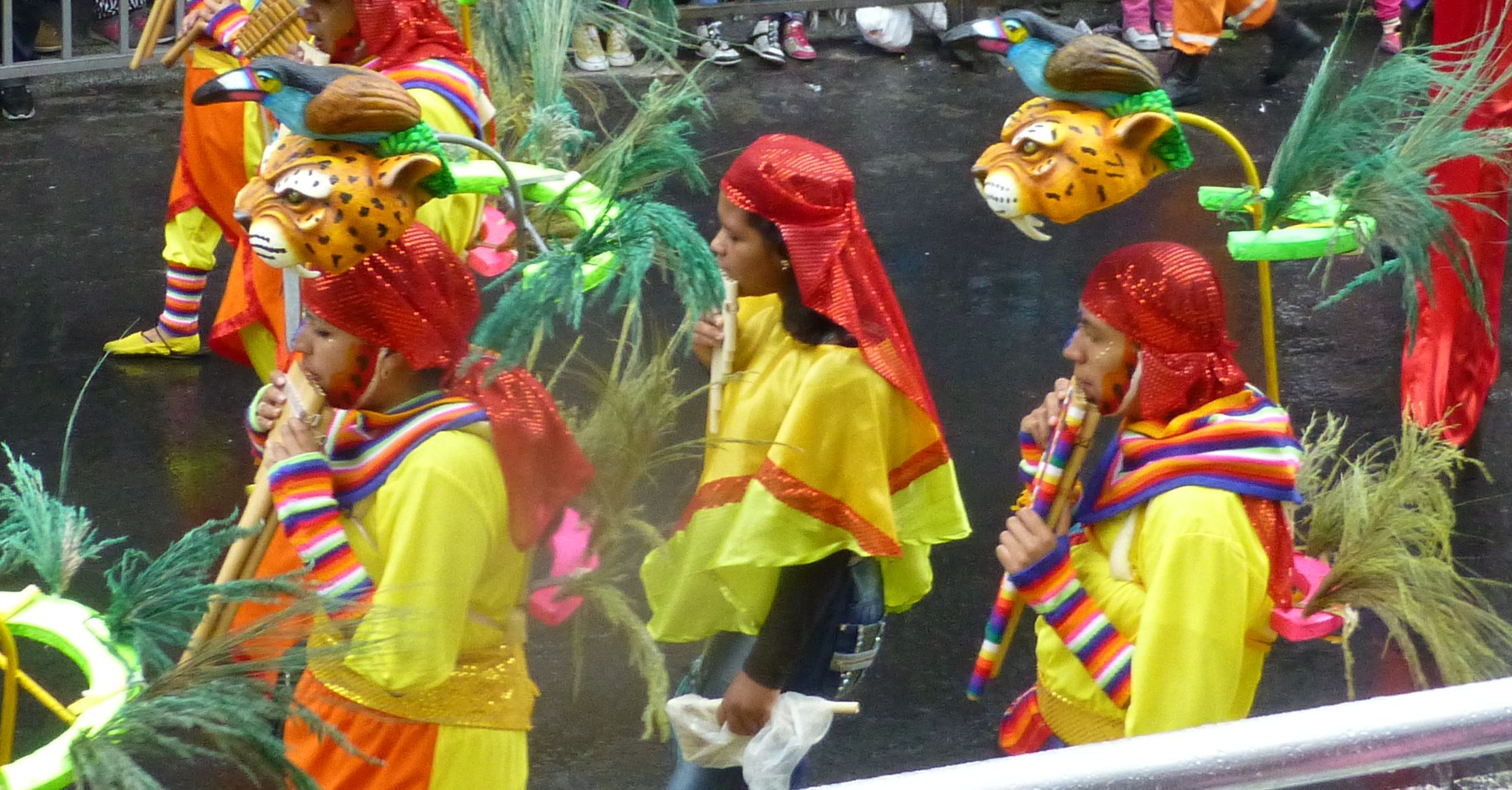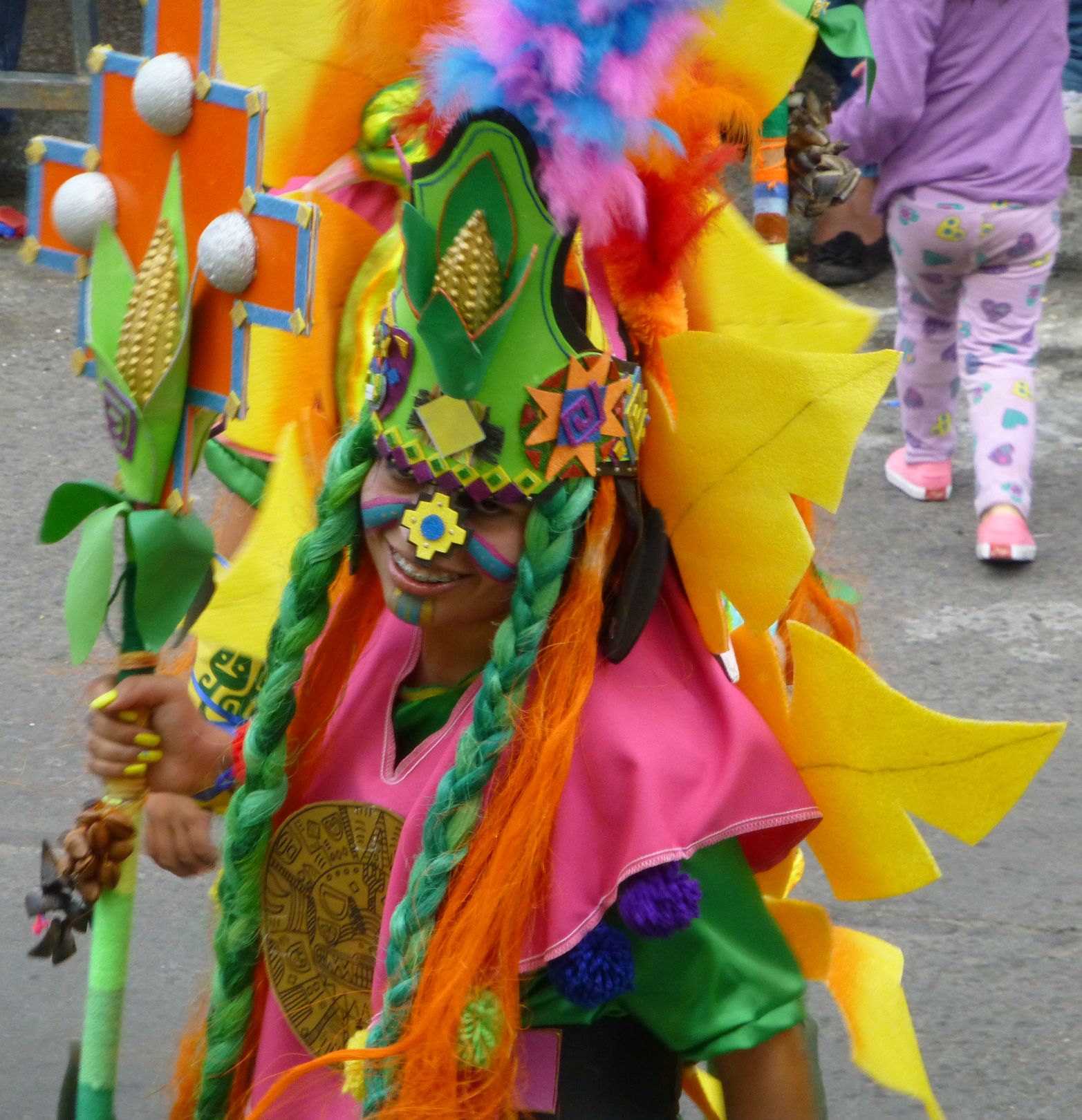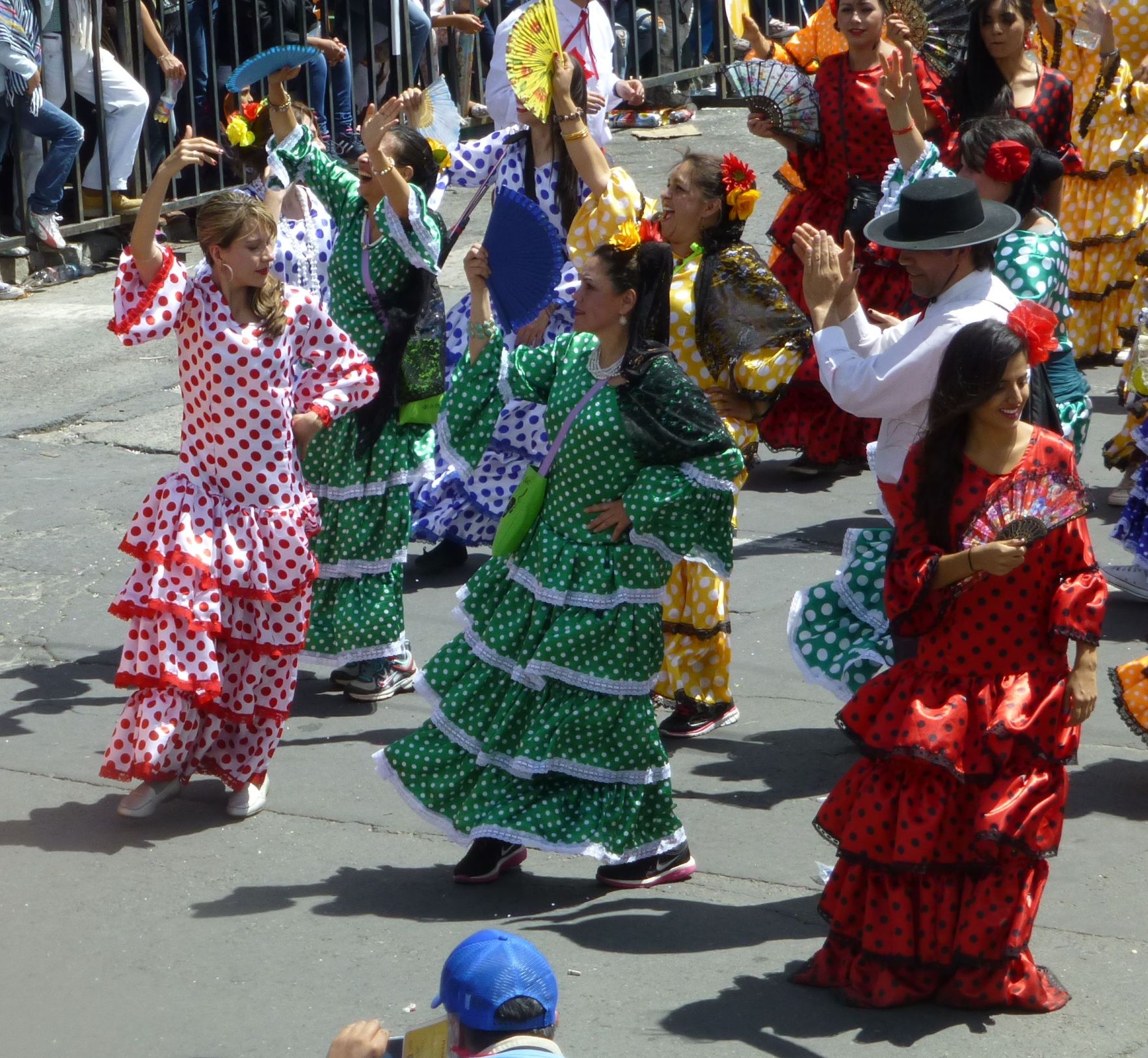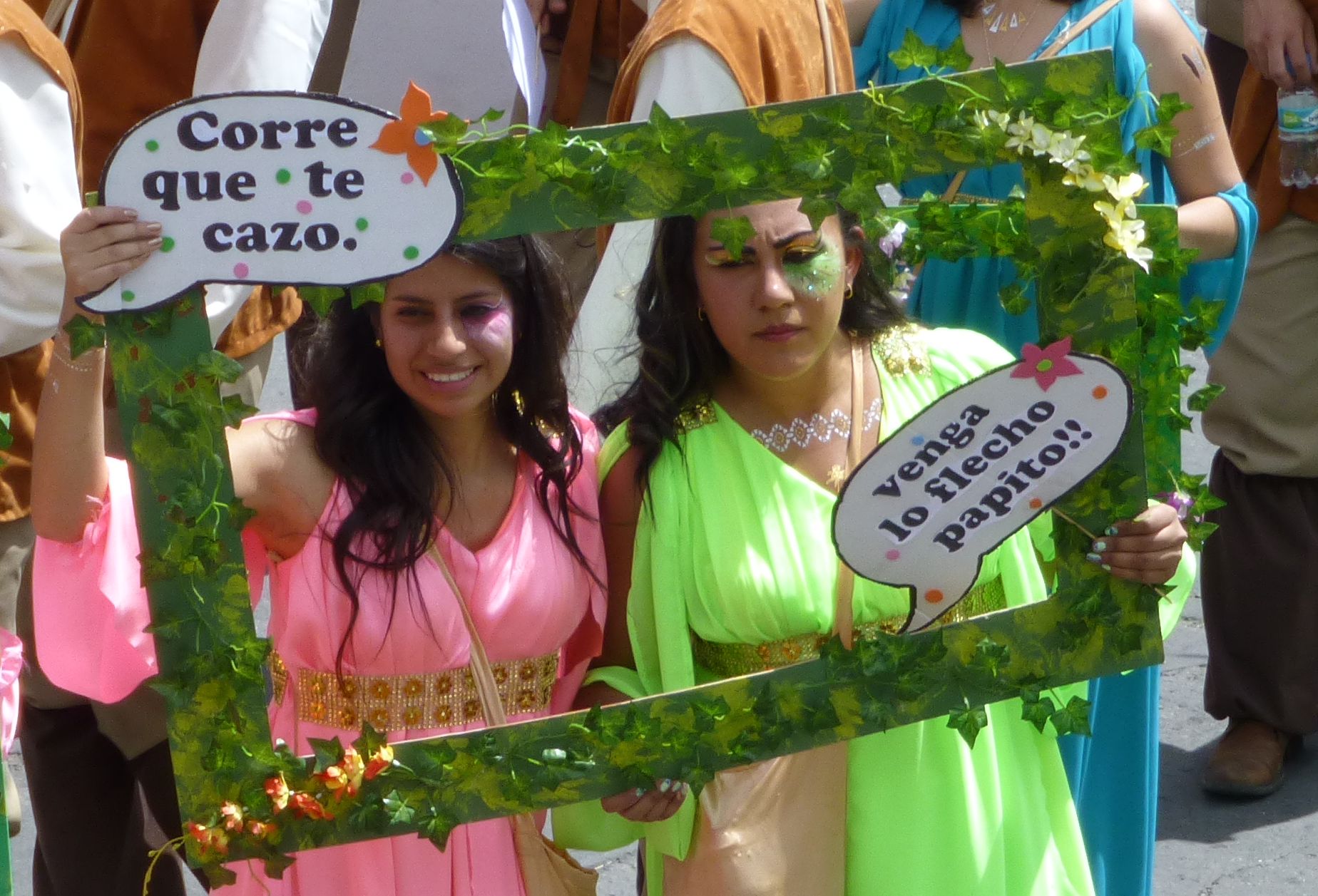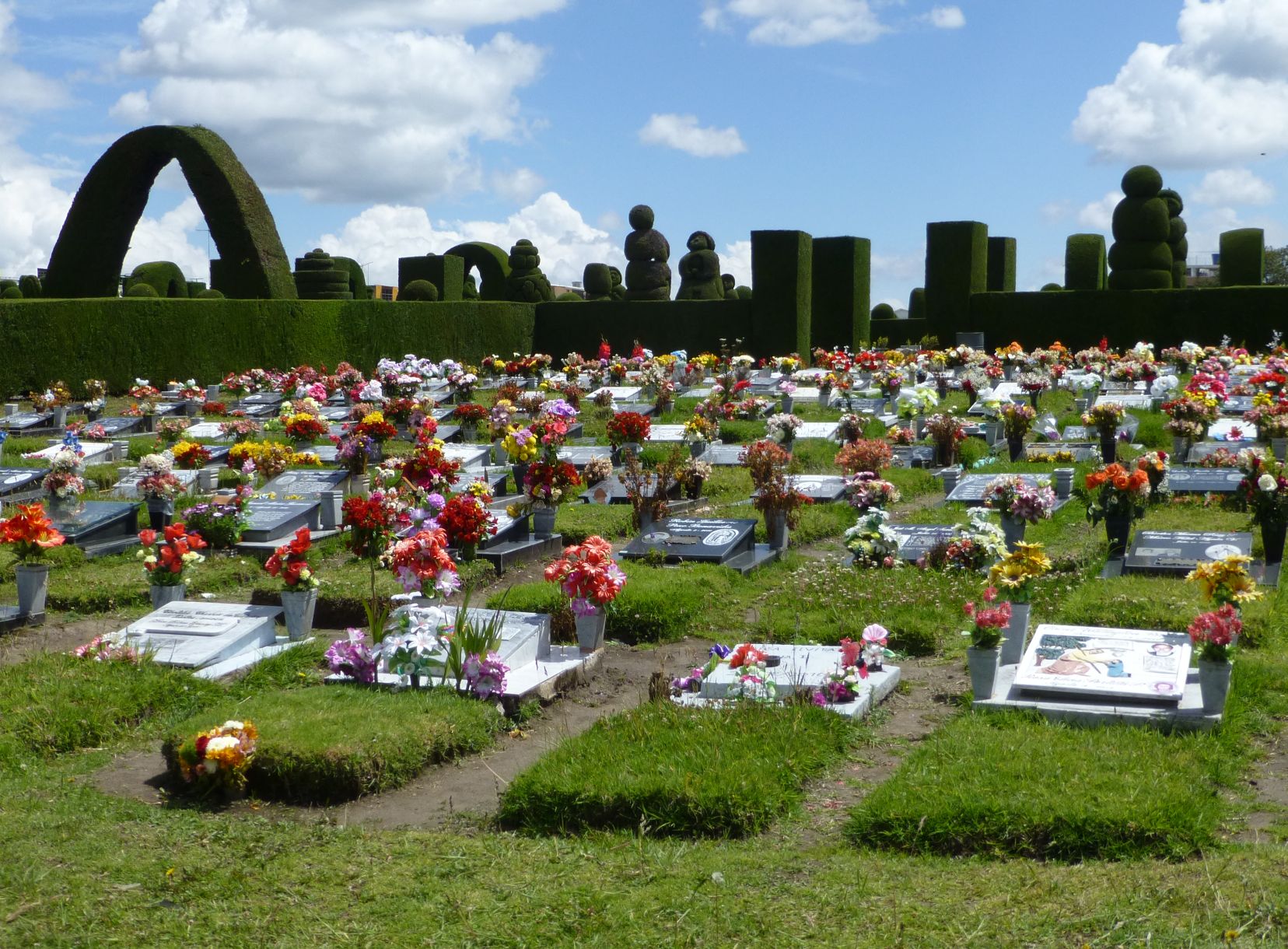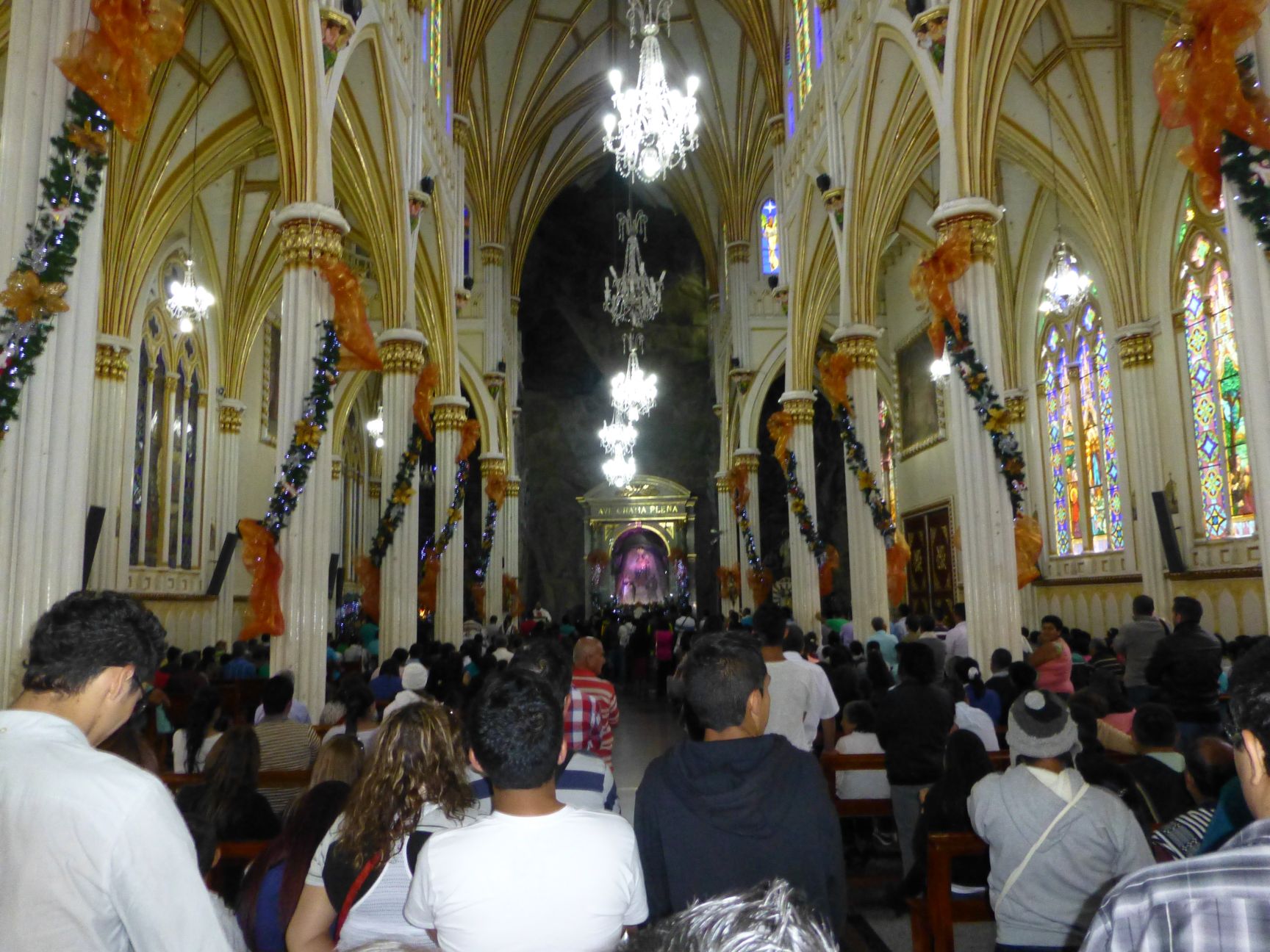
Two Months
in Colombia
Pasto
We started our trip in the city of Pasto in southernmost Colombia. Pasto is the site of one of the largest carnivals in Latin America. It's spread over five days and includes parades on four of those days. Because it is a crazy time we arranged to be part of a tour group through Cielo Y Tierra Tours (highly recommended).
The official title is the Carnival de Negros y Blancos (Black and Whites Carnival) and it is meant to be a celebration of racial diversity (including native American although that isn't in the name). And, it is crazy. One of the customs is that everyone should be black and white during the carnival. So throughout the entire time people are spraying carioca foam on one another to make people white (see below for photos). Less common, except on the last day, they also throw talc, a very fine white earth. That's not so fun as the spray and I only had it directly thrown on me once. The next to last day (January 5) is the Dia de los Negros. On that day peope get black paint and paint one another's faces (and sometimes clothes) with black paint. Our tour took a side trip that day so we didn't experience that. But I did see some black-painted faces.
Children's Parade - January 2, 2016
The children's parade is just the beginning. Schools around the city develop music routines and costumes and select a group of students for the parade. Cash prizes are awarded to the best.
Click on photos to see full size
Music and Dance - January 3, 2016
In today's parade about fifteen different groups (100 to 200 participants) perform Andean music and dance. This parade could be the main event in a major festival but here it is just a try-out. The two groups judged to be the best get to perform in the main parade on January 6.
Click on photos to see full size
La Famila Castañeda - January 4, 2016
This part of the carnival started in 1929. It celebrates and recreates the arrival and welcome given to a family traveling through Pasto that year. Sources I've read don't have much agreement on just what originally took place and no one knows where the family went afterwards. But it is a good excuse for another day of parades.
Click on photos to see full size


This policeman's dreams have come true ...


The Pasto area has a lot in common with nearby Ecuador and Peru. It's the one place in Colombia where people eat cuy, i.e. roast guinea pig. In fact, the people take pride in it as something that makes them distinct from the rest of Colombia. This banner is for the upcoming cuy festival. We didn't stay for it. (But I have eaten cuy a few times before. It's a lot like rabbit.)
Tulcan and Lajas - January 5, 2016
On January 5th the tour took a side trip since there were no parades that day. We went south and crossed over to the border city of Tulcan in Ecuador. The city cemetery is famous for its topiary. We crossed back to Ipiales, Colombia for lunch and then went to the nearby Lajas church. The church is built straddling a deep narrow canyon. This has been a pilgrimage site since there was a sighting of the Virgin Mary in 1754 here. The current church was built in the early 1900s.
Click on photos to see full size
The Big Finale - January 6, 2016
The parade on the final day lasts about five to six hours. The first part consists of individuals, small groups, and non-motorized (pushed) floats. At the end are the big motorized floats.
Click on photos to see full size
Carioca Spray
Carioca is a watery foam that comes out of a tall can. People's use of carioca sort of builds up until the last day when it turns totally crazy. It's harmless other than stinging a bit if it gets in the eyes. In just a few minutes it all melts away. But it is basically water so it makes your clothes wet. That's why a lot of people buy ponchos.
Sometimes people just give someone a quick spray while passing them on the street. Or a couple people may gang-up in an ambush and give someone a real soaking. That happened to Carmenza and Socorro below. And then people just get into all-out carioca wars. It is fun, although I have to admit that by the last day I was tired of getting sprayed and tired of the slightly-sweet smell.
Click on photos to see full size


Our tour guide, Fernando, on the attack.

Socorro. The perpetrators of the attack are behind her.

Ambushed!

Float Construction
After the children's parade on the first day our guide took us to see two floats in the final phases of construction. The process starts months before with the designs. Models are submitted to a carnival committe that awards money to each group to help with materials. (Labor is all volunteer.) The forms are primarily made with stiff foam which is painted over. The final construction takes places in the two weeks prior to the main parade. Some are made in warehouses. In other cases a side street will be block off and a huge tents erected to shelter the work.
In the pictures above there are dozens of people riding on these floats. But those aren't the volunteers who made them. Spots on the floats are sold for $50 to $150. That's the primary way these groups raise money to build next year's float. If I ever go again, that's what I'm going to do. It would be a blast to be on the float. And, there would be no carioca since no one sprays the floats.
Click on photos to see full size
If you want to know about the festival, this website blog from the 2015 Festival has a good account and the Wikipedia Article gives a good history (although it needs to be updated as the festival has grown from four to five days).
Contact
I can be reached at DonMooreDXer (symbol) Yahoo (period) com.





